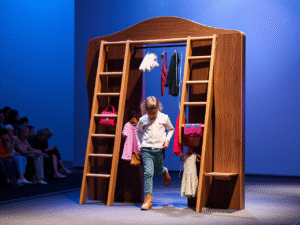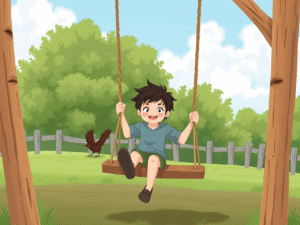
Introduction to Playground Swings
Playground swings are an integral component of recreational areas worldwide, serving as a quintessential element in children’s play and development. Not only do swings provide a source of entertainment, but they also promote physical activity, social interaction, and cognitive growth. The act of swinging helps children develop coordination and balance, while also fostering imaginative play as they experience the sensation of flying through the air.
These dynamic play structures come in various designs tailored to suit different age groups and needs. From traditional belt swings to bucket swings for toddlers and adaptive swings for children with disabilities, playground swings accommodate a diverse range of users. The versatility in design reflects an understanding of children’s developmental stages, ensuring that all children can participate in the joys of swinging. This emphasizes the role of swings as more than just play equipment; they are important tools for healthy childhood development.
The significance of material selection in the construction of playground swings cannot be overstated. Safety, durability, and comfort are paramount considerations in their design. High-quality materials must be chosen carefully to withstand outdoor conditions and ensure user safety during play. For instance, swing seats are typically made from durable plastics or heavy-duty rubber to provide comfort, while the frame often consists of robust metals or treated wood to maintain structural integrity over time. Overall, understanding the role of materials in playground swings not only enhances the enjoyment of the equipment but also ensures a safe environment for children as they engage in this timeless activity.
Common Materials Used for Swing Seats
Playground swings are a beloved fixture in recreational spaces, providing enjoyment for children of various ages. The choice of material used to construct swing seats significantly impacts safety, comfort, and durability. The most commonly used materials for swing seats include plastic, wood, and metal, each offering distinct advantages and drawbacks.
Plastic swing seats are widely used due to their lightweight nature and ease of installation. They are typically molded into a supportive design, providing a comfortable seat for users. One of the primary advantages of plastic seats is their resistance to weather conditions, ensuring they maintain their integrity over time. However, these seats can become slippery when wet, raising safety concerns during rainy weather. Manufacturers often address this issue by incorporating textured surfaces to improve grip.
Wooden swing seats showcase a classic aesthetic, appealing to those seeking a traditional look. Generally made from hardwoods like oak or maple, these seats provide a sturdy option for playground swings. The natural look of wood can enhance the visual appeal of playgrounds. Nevertheless, wooden seats require regular maintenance to prevent splintering and decay, especially when exposed to moisture. When treated properly, wood can offer a durable and attractive augment to swing equipment.
Metal swing seats, often constructed from heavy-duty steel or aluminum, are renowned for their strength and longevity. They can withstand rugged use and harsh weather conditions, making them ideal for high-traffic playgrounds. However, metal seats can heat up significantly in direct sunlight, posing a potential hazard to children trying to use them. Safety measures, such as installing protective padding or selecting finishes that minimize heat absorption, are essential considerations when opting for metal seats.
Ultimately, when selecting the right swing seat material, factors such as age appropriateness, safety regulations, and environmental exposure must be taken into account. By carefully evaluating these elements, playground designers and operators can create a safe and enjoyable swinging experience for children.
Swing Frame Materials: Safety and Stability
The stability and safety of playground swings are fundamentally influenced by the materials used to construct their frames. Among the most commonly utilized materials are steel, aluminum, and treated wood, each contributing distinct properties that ensure both structural integrity and durability. Steel is often favored for its superior strength and ability to support heavy loads, making it an excellent choice for high-traffic play areas. The use of galvanized or powder-coated steel enhances corrosion resistance, extending the lifespan of the swing frame even in various environmental conditions.
Aluminum is another significant material option, appreciated for its lightweight nature and resistance to rust. While it might not be as strong as steel, advancements in design and manufacturing have enabled manufacturers to create robust aluminum frames that meet safety standards. Additionally, its lighter weight allows for easier mobility and installation, which can be particularly beneficial for temporary setups or seasonal playgrounds.
Treated wood, although traditional, remains a popular choice for swing frames, especially in natural playground designs. The treatment process helps protect the wood from rot and insect damage, ensuring longevity. It also provides an aesthetically pleasing look that blends well into outdoor environments. However, it is essential to select high-quality wood and apply appropriate finishes to maintain safety and stability over time.
When designing swing frames, several considerations surrounding material choice arise. It is crucial to evaluate the expected usage and environmental factors, as swings must endure not only foot traffic but also potential weather impacts. Meeting safety regulations, such as ASTM standards, further emphasizes the importance of selecting robust materials capable of sustaining regular use without compromise. In essence, the choice of swing frame materials significantly impacts safety and usability, ensuring that children can enjoy swings reliably and securely.
Innovations in Swing Material Technology
Recent advancements in materials science have significantly influenced the design and production of playground swings, leading to improved safety and durability. Innovative materials such as synthetic rubber composites and high-density plastics have become increasingly prevalent in swing manufacturing. These materials are engineered to offer enhanced safety features, including superior shock absorption and resistance to ultraviolet (UV) radiation.
Rubber composites are particularly noteworthy due to their ability to absorb impact energy effectively, reducing the risk of injury during falls. This characteristic is especially essential in playground environments where children are likely to experience bumps and scrapes. Moreover, high-density plastics have emerged as a versatile alternative, offering not only durability but also moisture resistance, which helps maintain the swings’ integrity over time. The lightweight nature of these plastics makes installation and maintenance easier, promoting a more efficient approach to swing set assembly.
Beyond safety and performance, the industry is witnessing a shift towards eco-friendly materials and sustainable production practices. Manufacturers are increasingly incorporating recycled materials into swing design, which not only minimizes waste but also addresses growing environmental concerns. By utilizing renewable resources and adopting practices that reduce carbon footprints, swing producers are striving to balance playground enjoyment with environmental responsibility.
For instance, some companies are experimenting with biodegradable plastics and sustainably sourced wood, providing options that appeal to environmentally conscious consumers. This trend reflects a broader movement across the manufacturing sector, emphasizing the importance of sustainable design in creating products that are both enjoyable for children and mindful of the planet.
Overall, through these innovations in swing material technology, manufacturers are paving the way for safer, more enjoyable playground experiences while addressing the pressing need for sustainability in today’s environment.






